Stark reality of migration confronts scuba diving tourists on Spain’s El Hierro
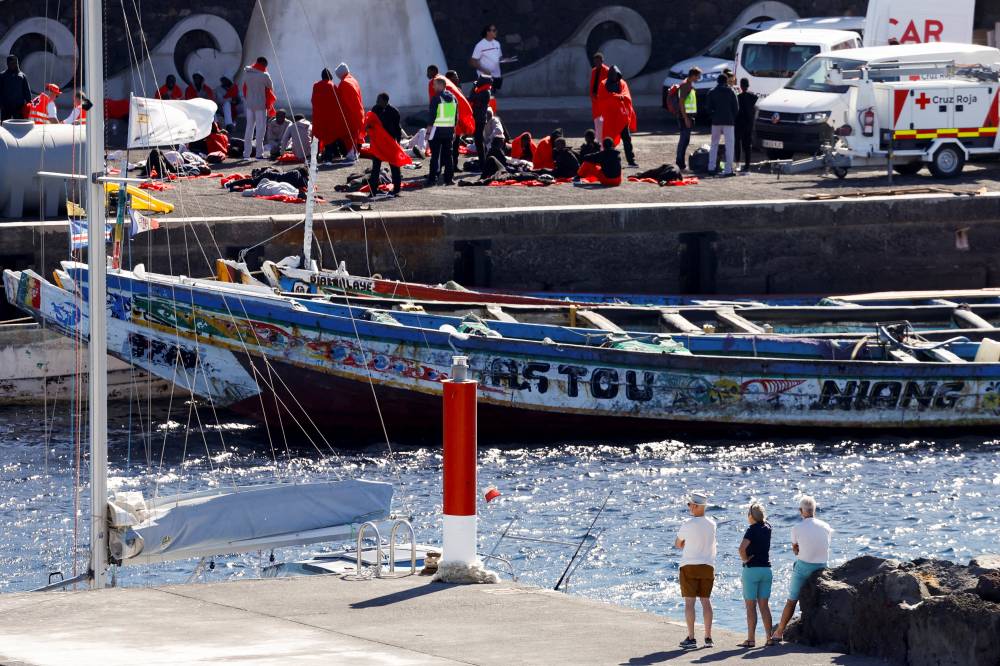

Several tourists observe migrants getting treated as they arrive, at the port of La Restinga, Spain, November 9, 2023. REUTERS/Borja Suarez.
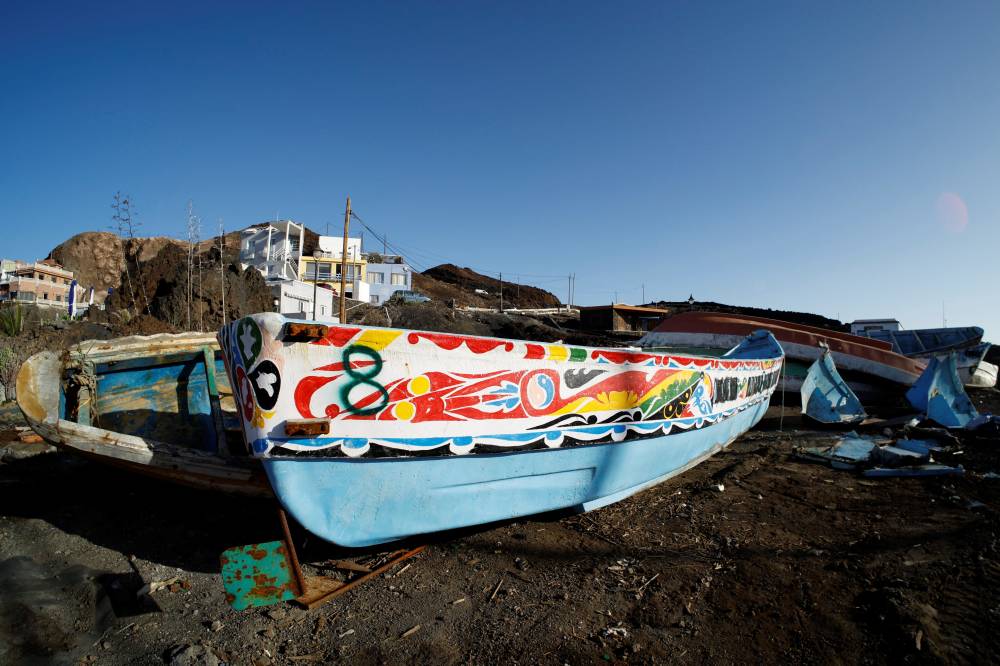
Several boats used by migrants are destroyed to transport them to another location outside the port of La Restinga. Spain, November 10, 2023. REUTERS/Borja Suarez.
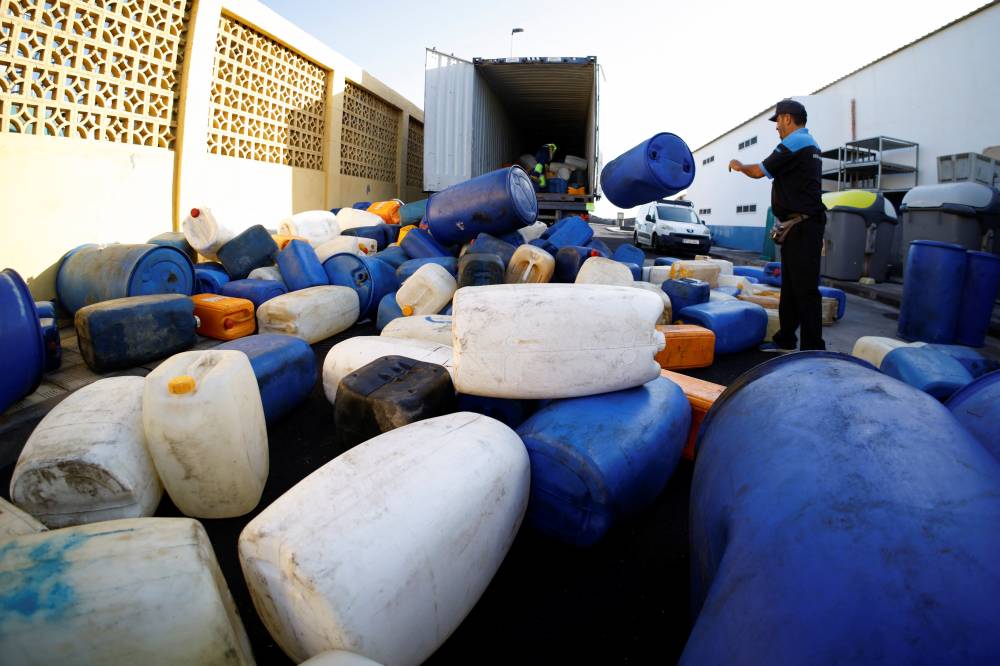
Port operators remove gasoline containers used by migrants on their wooden boats, at the port of La Restinga, Spain, November 10, 2023. REUTERS/Borja Suarez.
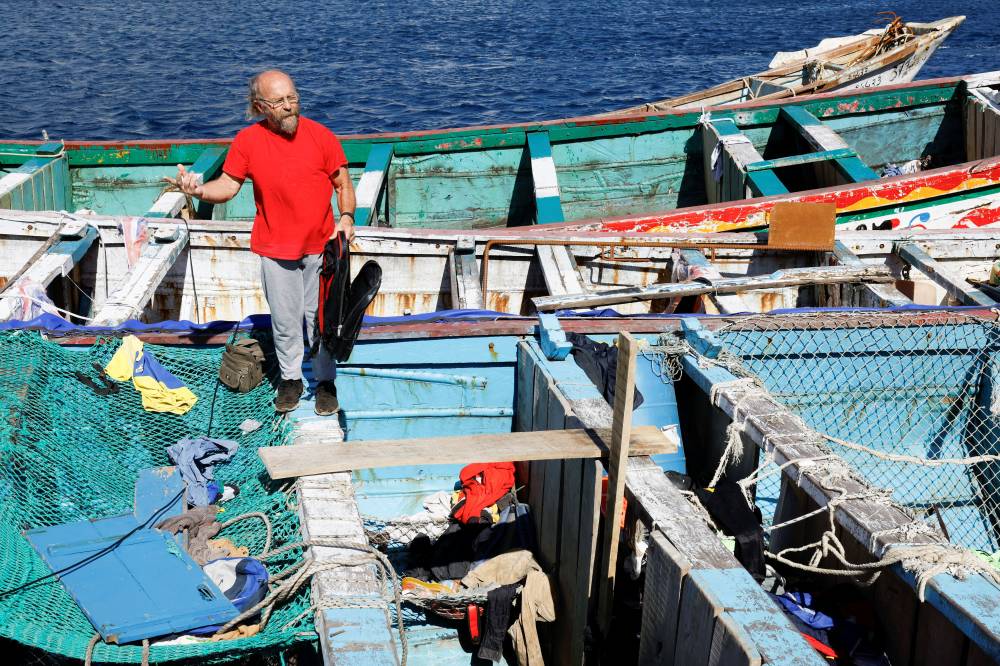
Fernando Gutierrez, the head of the port’s fishermen union observes the interior of abandoned wooden boats used by migrants in the port of La Restinga, Spain, November 9, 2023. REUTERS/Borja Suarez.
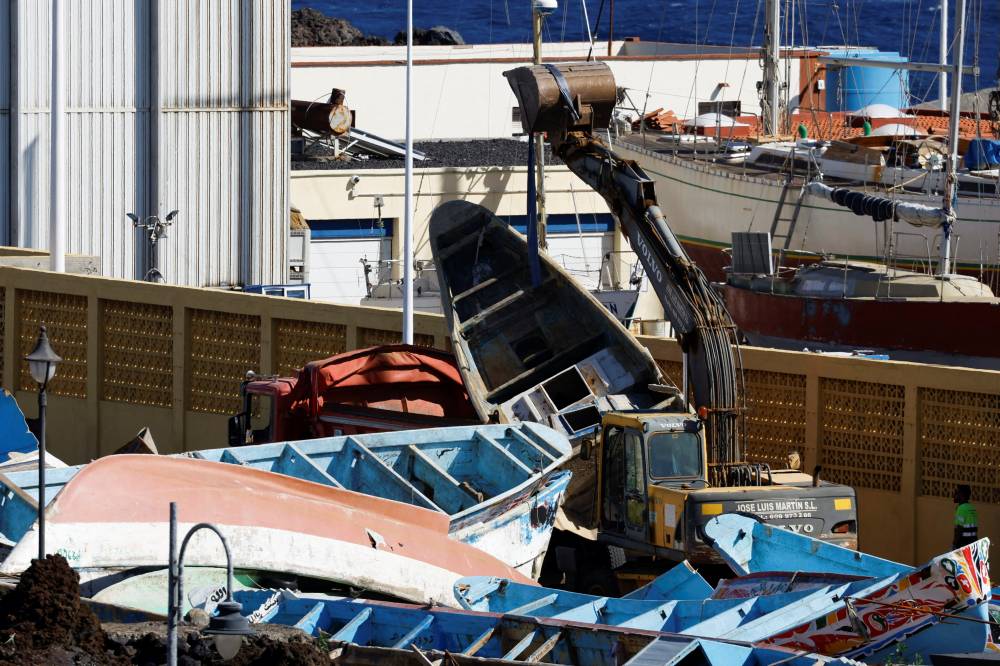
Port operators remove the remains of abandoned boats used by migrants, in the port of La Restinga, Spain, November 9, 2023. REUTERS/Borja Suarez.
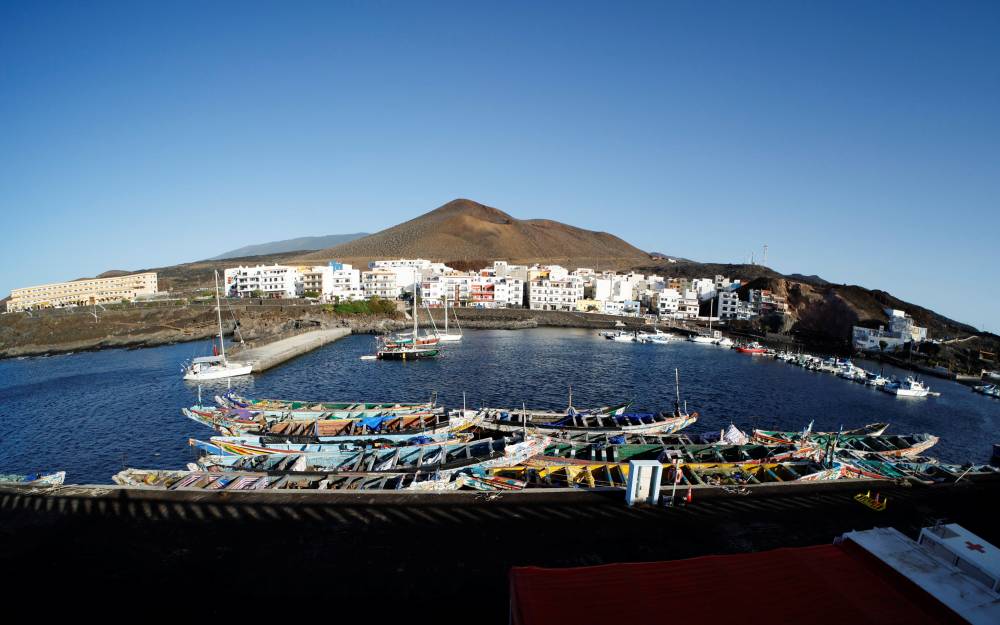
General view of abandoned wooden boats used by migrants in the port of La Restinga. Spain, November 10, 2023. REUTERS/Borja Suarez.
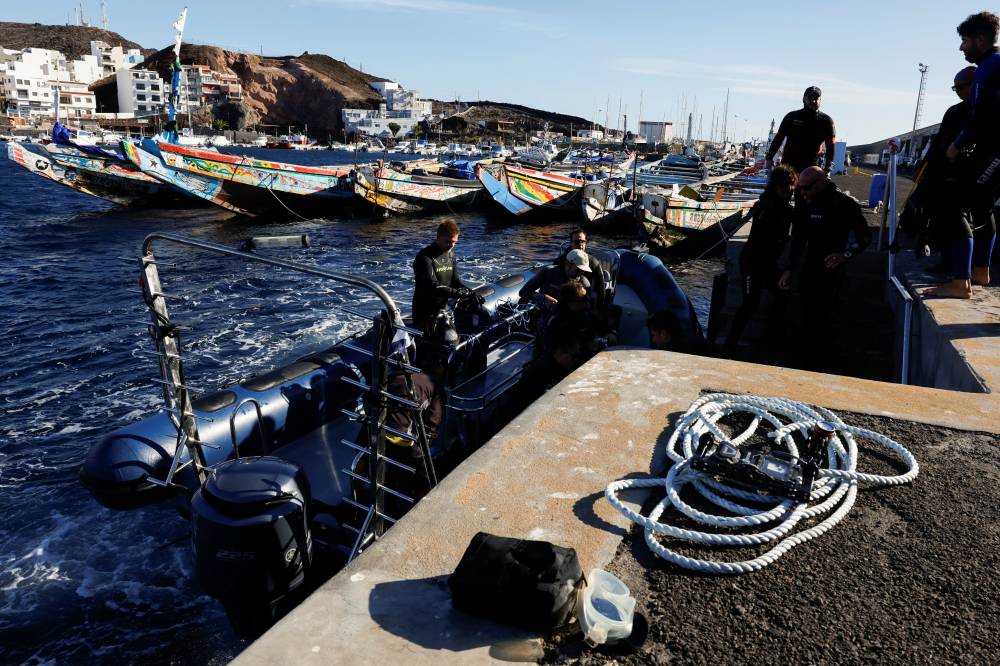
Tourists in diving gear prepare to leave on an inflatable boat near several abandoned wooden boats used by migrants in the port of La Restinga, Spain, November 9, 2023. REUTERS/Borja Suarez.
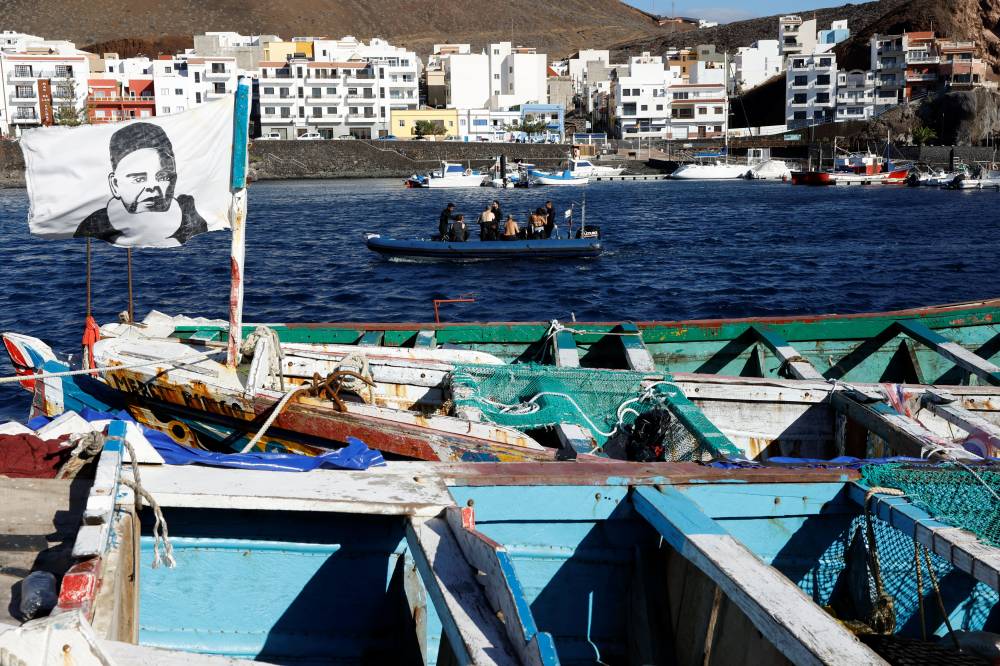
Tourist divers use an inflatable boat near several abandoned wooden boats used by immigrants in the port of La Restinga. Spain, November 9, 2023. REUTERS/Borja Suarez.
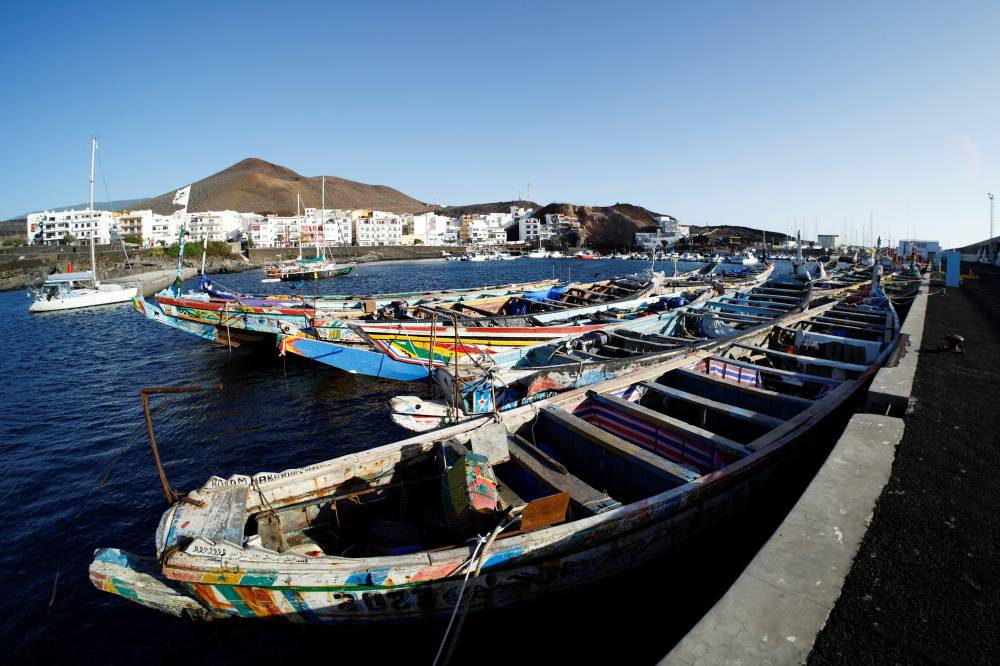
General view of abandoned wooden boats used by migrants in the port of La Restinga. Spain, November 10, 2023. REUTERS/Borja Suarez.
LA RESTINGA, Spain—El Hierro’s crystal clear waters and abundance of marine life have made this island in Spain’s Canaries archipelago one of the world’s top scuba diving spots.
But this year, the arrival of nearly 12,000 migrants on dugout wooden boats, or cayucos, from Africa means it is becoming better known as a new gateway to Europe.
At the tiny port of La Restinga, dive boats pick their way between around 20 abandoned cayucos in which discarded clothes, plastic utensils and petrol cans are still visible.
At least four have sunk in the harbor, disgorging rubbish and fuel into waters that are part of a marine reserve.
The delay in removing the boats amid a surge in migrant arrivals has locals worried about its impact on tourism, the island’s main source of income.
Local politicians, fishermen and tour operators are calling for more help from Spain’s government and the European Union as islanders do what they can to help migrants who land wet, exhausted and often dehydrated or with hypothermia.
“If this boat sinks, all the petrol, the oil from the engines, what’s inside, will go to the bottom, in a national marine reserve,” said Fernando Gutierrez, the head of the port’s fishermen’s union.
The cayucos occupy a third of La Restinga’s marina, from where eight dive operators depart at least twice a day with dozens of dive groups.
Tourists from Germany, Switzerland and mainland Spain said they were saddened by the situation as they watched Red Cross officials and local doctors attend to newly-arrived migrants sitting wrapped in thermal blankets on the dock awaiting registration.
Many migrants die en route and at least six died after arriving at the island in the last two months alone.
Alpidio Armas, president of El Hierro’s local government, said neither Spanish authorities nor the EU had grasped the magnitude of the crisis.
Genevieve Gosses, 55, a diver from France, said some friends had cancelled plans to visit El Hierro because of the crisis.
In recent weeks, divers practicing in the harbor have found clothes and even passports on its bottom, said Ginela Horn, director of a local dive company.
“We haven’t had any bookings cancelled yet but our clients are asking a lot of questions about the situation…it’s a bit complicated to provide an answer,” Horn said. —REUTERS
Reuters, the news and media division of Thomson Reuters, is the world’s largest multimedia news provider, reaching billions of people worldwide every day. Reuters provides business, financial, national and international news to professionals via desktop terminals, the world's media organizations, industry events and directly to consumers.
















